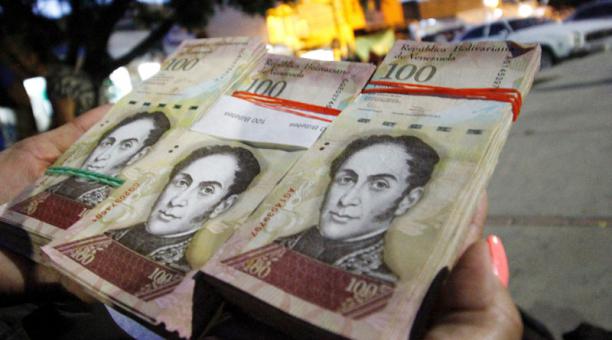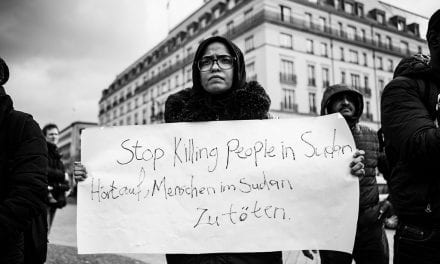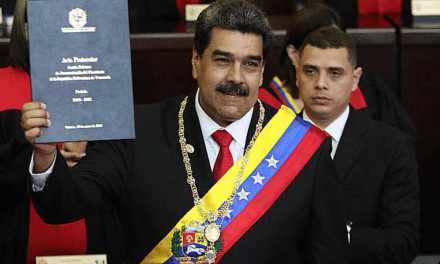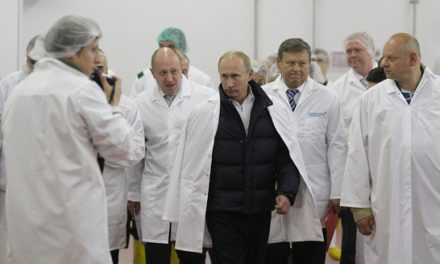By: Harry Nitzberg
All experts on Venezuela seem to have a single word on their tongues in the past week: inflation. Inflation is “a persistent, substantial rise in the general level of prices related to an increase in the volume of money and resulting in the loss of value of currency”[1]. Despite a small rebound in global oil prices over the past year, inflation has continued to spike according to various estimates (the Venezuelan government has ceased to report figures). The International Monetary Fund estimates that inflation has reached 652.7 percent and projects that by the end of 2018 will reach 2,350 percent.[2] Reuters has estimated inflation in 2017 to have been 2,616 percent.[3] In either case, the consensus is that Venezuela has entered what economists call hyperinflation, meaning that inflation has risen over 50 percent per month.[4]
To put this amount in perspective, the Federal Reserve of the United States and most central banks in the developed nations of the world aim for inflation of 2 percent.[5] Annual inflation of 2 percent is considered to be optimal because it “helps cushion against deflation, and gives the [central banks] room to cut interest rates and stimulate the economy during a downturn”.[6] For an economy to run smoothly, inflation must remain low because when inflation rises too quickly, wages typically rise much more slowly than inflation,[7] thus reducing the purchasing power of workers.[8] In addition, the purchasing power of money in savings decreases as inflation rises, and increased revenue created by inflation often leads distorted prices.[9]
Traditionally, during times of such great inflation, Latin American countries have taken two courses of action. The first is either, “currency pegging”, or its twin “currency boarding”. Currency pegging is tying the worth of one country’s currency to another. All Latin American countries that have implemented this policy in the past have pegged their currencies to the American dollar, given the relative stability of the dollar and the high trade between Latin American countries and the United States. Similarly, in a currency boarding system, the central bank of the country “issues notes and coins convertible on demand into a foreign anchor currency at a fixed rate of exchange. It holds low-risk, interest-bearing bonds denominated in the anchor currency as reserves.”[10] In addition, under an orthodox currency board, the state implementing it has no control over fiscal or monetary policy.[11] In either case, the logic is that by backing a country’s weak currency with a strong currency like the dollar, the value of the weak currency will be raised. Critics of pegging and currency boarding are quick to point out that when one ties their currency to another, their economy is left at the mercy of the interest rates set by the central bank of the country whose currency they are tied to. They also note that the central bank must hold an enormous amount of the foreign curreny in order to regulate the relative amount of each currency that is in their economy at any one time. Finally, critics point out, “pegging [can] incentivize the creation of a black market for the currency”. [12] Currency boards and pegging have produced mixed results in Latin America and beyond. The most famous example in recent memory is the currency boarding of the Argentinian Peso to the American dollar in 1991, which eventually led to an economic crisis in 2002.[13]
The second is a set of policies that have come to be called “neoliberal” economic policies, which aim to pull down inflation and encourage foreign investment. These policies typically include extreme reduction of government deficits. This means slashing social programs, privatizing government run enterprises (selling them to private investors), eliminating subsidies and opening the country to foreign direct investment. The logic is that by decreasing government expenditures, the need to print extra money to pay for government expenses is reduced, thus decreasing the amount of that country’s currency entering the economy and thereby slowing inflation. Usually, these policies are accompanied by an infusion of foreign money via one or more international monetary institutions, such as the World Bank or the International Monetary Fund. The money allows the countries to meet their short term debt payments, day-to-day operations, and the implementation of the aforementioned neoliberal economic policies.
For Venezuelan president Nicolas Maduro, both courses are political suicide. Over the course of Maduros’s presidency and the presidency of his predecessor, Hugo Chavez, their party, the Partido Socialista Unido de Venezuela (PSUV) thrived on galvanizing impoverished Venezuelans with anti-American/imperialist rhetoric. In addition, he railed against the international monetary institutions that created the inflation countering “neoliberal” reforms mentioned earlier, the International Monetary Fund and World Bank. Currently, despite Venezuela’s deep economic crisis, a sizable percentage of the population still supports Maduro because he continues to resist what they see as an American-orchestrated push by the international community for Maduro to step down. As such, any attempt by Maduro to peg the Venezuelan Bolivar to the American dollar would be seen as nothing short of traitorous by the true “Chavistas” (supports of Hugo Chavez’s socialist ideology) in his support base. From an economic standpoint, currency boarding may not be a good idea either.
Currently, due to high inflation and shortages of vital goods, the black market in Venezuela has grown exponentially, offering everything from food to medicine, to Bolivars (Venezuela’s currency). Today the black market exchange rate has reached $236,854.15 Bolviars to 1 US dollar.[14] Should Maduro decide to peg Bolivars to US dollars, he would need enough US dollars in reserves to back the transition, but with Venezuela’s massive foreign debts, sanctions barring American banks from buying Venezuelan debt,[15] and historical Venezuelan hostility toward the IMF and World Bank,[16] the chances of amassing the necessary reserves are slim.
In a similar vein, implementation of neoliberal economic reforms would likely be met with intense backlash. Neoliberal economic reforms are tied to the worst economic downturn for the continent in recent memory. When they were last implemented on a massive scale in the 1980s, economic growth was so low that the decade has since been called “the lost decade” by Latin Americans. Ten years ago, President Chavez finished paying existing debts to the World Bank five years ahead of schedule, the IMF closed its office in Venezuela, and on May Day 2007, Chavez announced his intention for Venezuela to “formalize [its] exit from the World Bank and the International Monetary Fund”.[17] A return to the same reforms that brought about the lost decade would be viewed by many as tarnishing Chavez’s legacy, to say the least.
Beyond the ideological problems with implementing such reforms are political problems. One of the bigger oversights of political reforms is that in the short run they have a disproportionate negative effect on the lowest sections of the socioeconomic ladder,[18] which happens to be Maduro’s voter base. Neoliberal economic reform would likely include the slashing of social programs (implemented by Chavez and maintained by Maduro) aimed at helping the poorest Venezuelans, privatization of many (if not all) assets of the state run Venezuelan oil company PDVSA, removal of price controls established at the onset of the Venezuelan economic crisis, and the end of subsidized oil transfers to Nicaragua and Bolivia (two of the other self-declared “socialist” nations in the hemisphere), isolating Venezuela from its traditional allies in the region.
With political survival in mind, Maduro must rein in inflation while simultaneously (at least appearing to be) sticking to his anti-imperialist/socialist roots. As such, Maduro must find a way to decrease government expenditure while maintaining a good deal of social programs without explicitly seeking help from the World Bank, International Monetary Fund, or any American banks (which are off limits anyway due to sanctions)[19]. This dilemma has left Maduro with little else to do but seek support from nations that are not aligned with the United States, such as Russia, which has already lent Venezuela approximately $3 billion to meet its upcoming debt deadlines.[20] With the situation in Venezuela getting worse by the day, Maduro is faced with a no-win situation: either ask for the help of the very international monetary institutions which Hugo Chavez decried as “dominated by US imperialism”[21] or slowly watch more and more of his own people turn against him or leave as the situation in Venezuela deteriorates.
[1] Dictionary.com. 2018. Inflation | Define inflation at Dictionary.com. Accessed February 11, 2018. http://www.dictionary.com/browse/inflation.
[2] International Monetary Fund. 2017. World Economic Outlook (October 2017)-inflation rate, average consumer prices. October. Accessed February 11, 2018. http://www.imf.org/external/datamapper/PCPIPCH@WEO/VEN.
[3] Reuters Staff. 2018. Venezuela 2017 annual inflation at 2,616 percent: opposition lawmakers. January 8. Accessed February 11, 2018. 2018.
[4] Salemi, Michael. n.d. Hyperinflation: the Concise Encyploedia of Economics. Accessed February 11, 18. http://www.econlib.org/library/Enc/Hyperinflation.html.
[5] Irwin, Neil. 2018. The Stock Market Is Worried About Inflation. Should It Be? February 8. Accessed February 11, 2018. https://www.nytimes.com/2018/02/07/upshot/the-stock-market-is-worried-about-inflation-should-it-be.html.
[6] Ibid.
[7] Easterly, William, and Fischer Stanley. 2000. “Inflation and the Poor.” The World Bank: Development Research Group. Accessed February 11, 2018. http://documents.worldbank.org/curated/en/667341468767111866/pdf/multi-page.pdf.
[8] Ibid.
[9] Hazlitt, Henry. 1978. Economics in One Lesson. Three Rivers Press.
[10] Hanke, Steve. 2017. Venezuela’s Maduro Flunks His Economic Literacy Test. September 10. Accessed September 11, 2018. https://www.forbes.com/sites/stevehanke/2017/09/10/venezuelas-maduro-flunks-his-economic-literacy-test/#79c948457480.
[11] Ibid.
[12] Bobkoff, Dan, and Elena Holodny. 2016. One Move Almost Always Sets off Chaos in the Currency Market. August 22. Accessed February 11, 2018. http://www.businessinsider.com/what-is-a-currency-peg-2016-8.
[13] Bloomberg News. 2002. Dollar Peg Nearing End In Argentina. January 3. Accessed February 11, 2018. http://www.nytimes.com/2002/01/03/business/dollar-peg-nearing-end-in-argentina.html.
[14] Dollartoday.com. 2018. Noticias de Venezuela y Dolar Paralelo. February 11. Accessed February 11, 2018.
[15] US Department of the Treasury. 2018. OFAC FAQs: Other Sanctions Programs. . February. Accessed February 11, 2018. https://www.treasury.gov/resource-center/faqs/Sanctions/Pages/faq_other.aspx#venezuela.
[16] Tran, Mark. 2007. Venezuela Quits the IMF and World Bank. May 1. Accessed February 11, 2018. https://www.theguardian.com/business/2007/may/01/venezuela.imf.
[17] Ibid.
[18] Furceri, Davide, Prakash Loungani, and Jonathan D. Ostry. 2016. “Neoliberalism Oversold? –Fiance and Development.” Finance and Development 53 (2). Accessed 11 2018, 2018. http://www.imf.org/external/pubs/ft/fandd/2016/06/ostry.htm.
[19] Weisbot, Mark. 2017. Trump’s Sanctions Make Economic Recovery in Venezuela Nearly Impossible. September 7. Accessed February 11, 2018. https://www.thenation.com/article/trumps-sanctions-make-economic-recovery-in-venezuela-nearly-impossible/.
[20] Krauss, Clifford. 2017. Russia Says It Will Ease Debt Burden on Venezuela. November 8. Accessed February 11, 2018. https://www.nytimes.com/2017/11/08/business/energy-environment/russia-venezuela-debt.html
[21] Tran, Mark. 2007. Venezuela Quits the IMF and World Bank. May 1. Accessed February 11, 2018. https://www.theguardian.com/business/2007/may/01/venezuela.imf.







